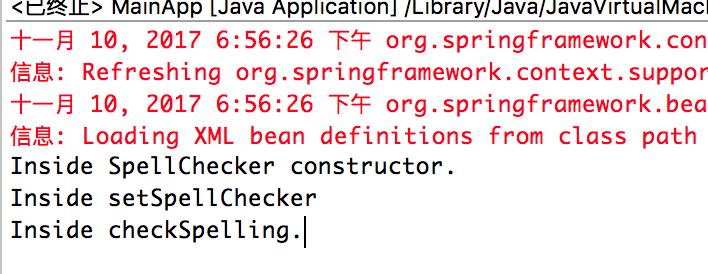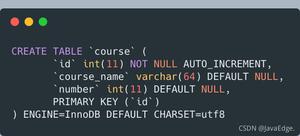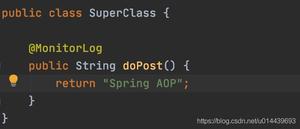Spring-基于设置函数的依赖注入
本文内容纲要:Spring-基于设置函数的依赖注入
Spring 基于设置函数的依赖注入
当容器调用一个无参的构造函数或一个无参的静态factory方法来初始化你的bean后,通过容器在你的bean上调用设值函数,基于设值函数的DI就完成了。
下面是TextEditor.java:
package com.tuorialsponit;public class TextEditor {
private SpellChecker spellChecker;
public void spellCheck() {
spellChecker.checkSpelling();
}
public SpellChecker getSpellChecker() {
return spellChecker;
}
public void setSpellChecker(SpellChecker spellChecker) {
System.out.println("Inside setSpellChecker");
this.spellChecker = spellChecker;
}
}
SpellChecker.java
package com.tuorialsponit;public class SpellChecker {
public SpellChecker(){
System.out.println("Inside SpellChecker constructor.");
}
public void checkSpelling(){
System.out.println("Inside checkSpelling.");
}
}
MainApp.java文件的内容:
public static void main(String[] args){ ApplicationContext context = new ClassPathXmlApplicationContext("beans.xml");
// HelloWorld obj1 = (HelloWorld) context.getBean("helloworld");
// System.out.println(obj1.getMessage1());
// System.out.println(obj1.getMessage2());
//
// System.out.println("-----------------------");
// HelloIndia obj2 = (HelloIndia) context.getBean("helloIndia");
// System.out.println(obj2.getMessage1());
// System.out.println(obj2.getMessage2());
// System.out.println(obj2.getMessage3());
// String message = obj.getMessage();
// System.out.println(message);
TextEditor textEditor = (TextEditor) context.getBean("textEditor");
textEditor.spellCheck();
}
配置文件beans.xm的内容:
<bean id="textEditor" class="com.tuorialsponit.TextEditor"> <!-- <constructor-arg ref="spellChecker"></constructor-arg> -->
<property name="spellChecker" ref="spellChecker"></property>
</bean>
<bean id="spellChecker" class="com.tuorialsponit.SpellChecker">
</bean>
你应该注意定义在基于构造函数注入和基于设置函数注入中beans.xml文件的区别。唯一的区别在于使用的标签元素不同。第二个你需要注意的点是,如果你要把一个引用传递给一个对象,那么你需要使用标签的ref属性,而如果你要直接传递一个值,那么你应该使用value属性。
运行结果:

使用p-namespace实现XML配置
如果你有很多的设置函数方法,那么在xml配置文件中使用p-namespace是非常方便的。让我们查看一下区别:
xmlns:p="http://www.springframework.org/schema/p"<bean id="helloworld" class="com.tuorialsponit.HelloWorld"
p:message1="Hello world"
p:message2="Hello Second World">
<!-- <property name="message1" value="Hello world"/>
<property name="message2" value="Hello Second World"></property> -->
</bean>
在这里,你不应该区别指定原始值和带有p-namespace的对象引用。-ref部分表明这不是一个直接的值,而是对另一个bean的引用。
注入内部Beans
正如你所知道的Java内部类是在其他类的范围内被定义的,同理,inner beans是在其他bean的范围内定义的bean。
如下所示:
<bean id="outerBean" class="..."> <property name="target"> <bean id="innerBean" class="..."></bean> </property> </bean>beans.xml如下:
<bean id="textEditor" class="com.tuorialsponit.TextEditor"> <!-- <constructor-arg ref="spellChecker"></constructor-arg> -->
<property name="spellChecker">
<bean id="spellChecker" class="com.tuorialsponit.SpellChecker">
</bean>
</property>
</bean>
本文内容总结:Spring-基于设置函数的依赖注入
原文链接:https://www.cnblogs.com/fangpengchengbupter/p/7817020.html
以上是 Spring-基于设置函数的依赖注入 的全部内容, 来源链接: utcz.com/z/295928.html







